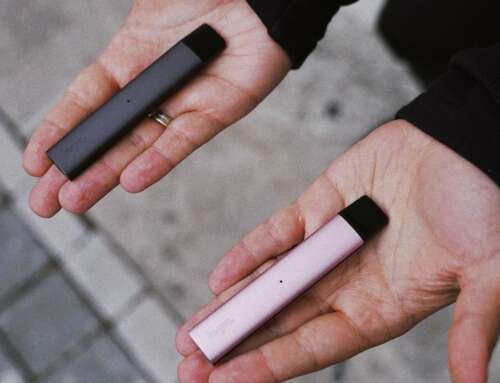The Finnish government has set an ambitious goal for residents in a bid to benefit their health — and their bank balances.
Officials plan to make the country tobacco-free by 2040, meaning they want less than 2% of their adults to consume tobacco — in any form — by that deadline.
So that’s more than 98% of the Finnish population saying no to cigarettes, snuff and other forms of smokeless tobacco, cigars, pipes and even e-cigarettes.
As per the trend in industralized countries, smoking rates in Finland have been on the decline in recent decades due to measures such as bans on advertising and shop displays, and the creation of smoke-free public spaces. In 2013, 16% of 15- to 64-year-olds in Finland smoked on a daily basis, while nearby in the UK, 19% of adults were smokers in 2014.
But at the start of this year, a new level of control measures came into force.
“The Finnish approach is revolutionary,” said Kaari Paaso, head of the unit on harm prevention at the country’s Ministry of Health and Social Affairs. “We want to get rid of all tobacco products.”
Experts agree that the Finnish government is using innovation and creativity to get everyone to kick the habit.
Rather than targeting one area at a time, such as exposure in public spaces or cigarette use, Paaso said his ministry wants to be precautionary from every angle. It doesn’t go down the path of advocating milder products that may do less harm, such as e-cigarettes or snuff. “It’s a comprehensive set of policies,” he said.
“We don’t want to fall into the trap of other policies that have less harmful products,” said Paaso, who fears that promoting other products will result in a new addiction for health officials to deal with in the future. “We want to phase out all products.”
And that phasing out has begun.
Raising the cost of selling tobacco
Experts agree that one of the strongest policies in terms of tobacco control globally has been taxation. The rising cost of the habit, linked to higher taxes, has meant that many can no longer afford to smoke, and those who can smoke provide revenue for anti-smoking campaigns and quitting support services, to name a few options.
“The evidence suggests increasing pricing is the single most effective way to reduce demand,” said Vaughan Rees, director of the Center for Global Tobacco Control at the Harvard T.H. Chan School of Public Health.
“In states where we see the highest tax rates, we see the lowest prevalence,” he said, highlighting New York City, where then-Mayor Michael Bloomberg introduced city taxes on top of state taxes in 2010. Just over 14% of New Yorkers smoked in 2016, according to the NYC Smoke-Free program.
So Finland has now introduced another giant financial barrier for users: It increased the costs for vendors selling tobacco products.
“There’s quite a high fee to license it and to sell it,” Paaso said.
Any business wanting to sell tobacco must first apply and pay for a license, a one-off process, but an additional fee must be paid annually to cover the costs of surveillance officers in each municipality who will check that retailers are following the rules.
The surveillance fee is the killer, as this is calculated per checkout or cashier in any business and can be as high as €500 ($536) annually per checkout.
The fee is now set by individual municipalities, not the state, many of whom have decided this upper limit should be the actual cost.
Smoke-free balconies and cars
Another unique approach the Scandinavian country implemented this month was the ability to apply for a ban on people smoking on neighboring balconies if their presence is a disturbance.
Housing companies may now apply for the ban if smoke is seen to be spreading from someone’s private balcony and onto other spaces. As in many other countries, bans are in place in public areas, but this new policy addresses a smoker’s private space.
“You can apply for a ban,” Paaso said. “There hasn’t been big change … but these measures are still quite new.”
– Meera Senthilingam
Read more: What Finland’s plan to be tobacco-free can teach the world
Photo Source: Unsplash








Leave A Comment